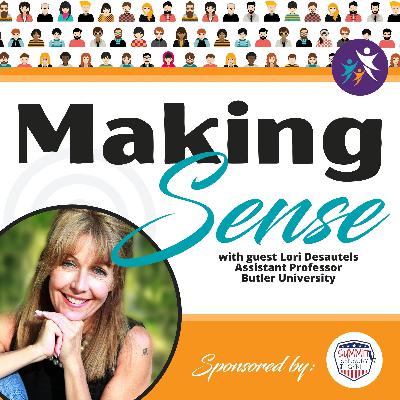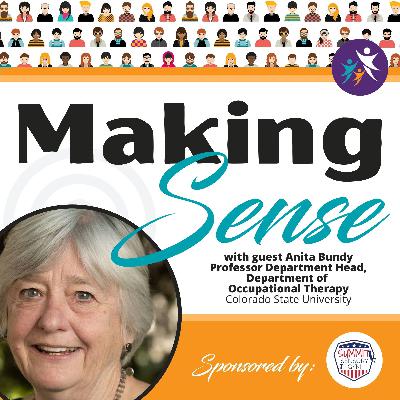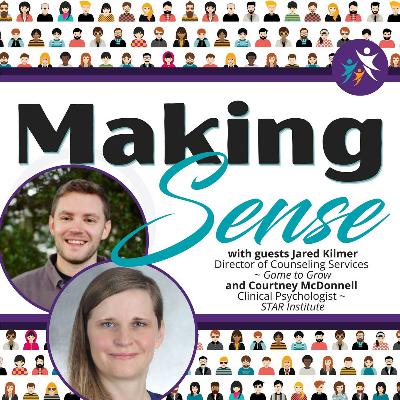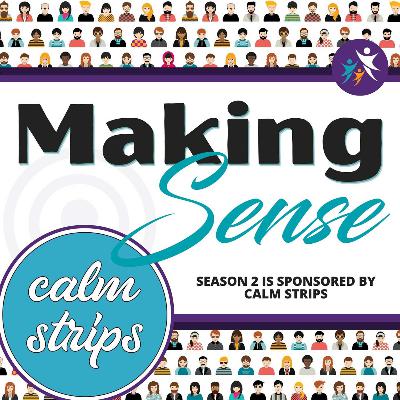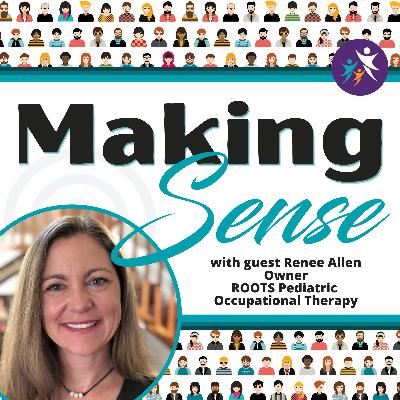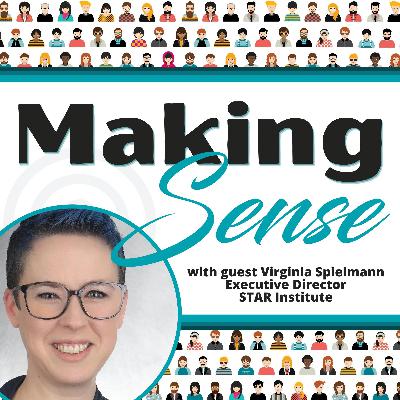Reaching for Sustainable Behavioral Shifts: A Look Inside the Applied Educational Neuroscience Framework
Description
Join Dr. Lori Desautels to explore how trauma and adversity impact the developing brain and body and show up in the challenging behaviors we sometimes see. Learn about mitigating the effects of trauma in our schools and communities while building resiliency and a secure sense of belonging through a relational approach to discipline. Discover practices that meet our children, youth, and adults in their brain and body states and cultivate their social, emotional, and cognitive well-being.
The views expressed in the following presentation are those of the presenter(s) and do not necessarily reflect those of STAR Institute.
Resources Mentioned In this episode:
- Lori Desautels, Ph.D. resources: https://revelationsineducation.com/resources/?v=4096ee8eef7d
- Deb Dana, LCSW: https://www.rhythmofregulation.com/about
- Dr. Bruce Perry: https://www.bdperry.com/
- Dr. Albert Wong: https://www.dralbertwong.com/
- Dr. Stephen Porges: https://www.stephenporges.com/
- Polyvagal graph from Dr Lori Desautels and Deb Dana, LCSW: https://twitter.com/desautels_phd/status/1391564089479114752?lang=en
- Angela Davis quote: https://gustavus.edu/gwss/events/angeladavisflier.pdf
Episode transcript:
Carrie Schmitt
I'm joined today by Dr. Lori Desautels. I was hoping that you could introduce yourself to the listeners today. And tell us just tell us a little bit about your background and where you are today.
Lori Desautels
Thank you, Carrie. And first of all, thank you for having me join in this really critical discussion. And so, I am an assistant professor at Butler University in Indianapolis. And I also am working with schools, organization, districts across the world right now, helping teachers, social workers, counselors, administrators, to really delve underneath behaviors. And to understand that the nervous system is really showing up every single time, we see challenging behavior from a child or an adolescent, or a colleague. So I've developed a framework that's evolving, it's continually changing. It's called applied Educational Neuroscience. And it really is about the adult nervous system, and how contagious emotions are. So we know that as a parent, I'm a mom also have three young adult children. But this is not just about me, as a professor, or as a school counselor, or as an educator, I carry in to my work, my lived experiences, what I have embodied. So the very first pillar at this work, we really take a deep dive into our own nervous systems. We know that behavior management is about adults, it's just not about kids. And this is a big shift for educators and for parents, to really begin to understand as the science. So well researched, and the literature share with us in this time. This framework also looks at co regulation, which is at the heart, it's at the core of this new lens for discipline. We take also a deep dive into touch points, which we term as those micro moments of connection that happen all day long, and most and what we sometimes misunderstand is that those touch points are nonverbal. So children and adolescents and any of us, when we are experiencing elevated or chronic stress, when our stress response systems are activated, we really are not listening to language or words, we're really tapping into nonverbal. And then the fourth pillar of the framework is really what I'm excited to share about often today. And that is we are teaching our children, little like four or five years old, in our adolescents and the adults, we're learning together about our nervous systems. So we're really moving away from always talking about behaviors, and looking at how our sensory and nervous systems are driving the behaviors that are indicators. They're just really signals that were rough, you know, or that we're feeling some steadiness or some groundedness. So that's, that's really what that's the work that I'm doing right now.
Carrie Schmitt
Oh, that's wonderful. I'm super excited to unpack that a little bit. Because I think, at the start Institute, we often encounter clients who come to us, because there is a behavior that the parents are encountering, the teacher is encountering, and that they're trying to make sense of, we are equipped with sensory lenses, right, because of our education around sensation and how sensation underlies a lot of our nervous system capacities. And so I immediately heard as you started the conversation around behaviors, and what behavior can teach us about what's going on with other people, but the twist that I heard was, what does behavior or our inclination to manage that behavior? Tell us about our own nervous systems? So talk to me a little bit about that.
Lori Desautels
Well, it's it's really a big shift in this time for adults, whether we are parenting whether we are caregiving, whether we are teaching anyone who sits beside Children and Youth, we need to begin to understand how our nervous systems are so contagious. And we can unintentionally escalate a child, or an adolescent, or our own children, by not tuning in, and being aware of our own nervous system states. And this is critical, because in our school, over the past couple of years during kind of during COVID, and kind of as we move through this global pandemic, all of us have been impacted by the trauma of this pandemic. And in the reason I bring that up, is because our bodies become hijacked by this sensory fragment, or the fractures that happen when we are confronted with significant or chronic adversity and trauma. And so, when we walk into a classroom, when we walk into, you know, our schools, we carry that with us, and our children and adolescents pick up on the autonomic state of our nervous systems. So we are seeing a significant correlation of high discipline referrals from educators that are also coming in in a very elevated and activated stress response state. And our discipline data in our schools really tells the story of our autonomic nervous system state. So when you see an teacher and administrator, a social worker, or a counselor, a bus driver of food service provider appear professional, when any of us are feeling so dysregulated, we can, again, unintentionally, really escalate everybody around us. And we misunderstand that that behavior is communicating a sensory or nervous system need, it's really a physiological challenge. It's not a behavioral challenge.
Carrie Schmitt
I'm so fascinated by how you're reframing this, and I think it's going to be pretty new to a lot of people. You work in a school system. And when you see high discipline referrals, one of the questions you're asking, is the adult in the situation regulated? And I think our system is built to say, what's wrong with the child's behavior? So what how do we, as adults take responsibility for our nervous system? Are there tools as a school counselor, as you know, a PhD scientist that you are like, what is it that you think, helps us? Is there a tool that helps us to understand our own nervous system state, so that we can come into these situations regulated with the capacity to also we'll talk about this later. But I think this is a good segue into lend our nervous system to the children that need the CO regulation, right? Because their behaviors are behaviors, they're communicating something, they're communicating something about their own nervous system. And oftentimes, as adults, we're called upon to lend our regulation to them, so that some co-regulation can occur. In the absence of an adult with a regulated nervous system. And a child with a dysregulated nervous system. We're getting discipline and behavioral referrals. Is that di summed that up correctly?
Lori Desautels
Yeah, pretty much. Yes. And this is true for Fs parent. So I really want to make the you know, as we speak about this framework, during the podcast, it says much about me at the mom as it is a professional and I want to also be clear that it's not very realistic to you know, to think about I must be regulated, I must be regulated. The goal is to recognize and be aware when we are dysregulated that is the first step that is a practice that we really want to bring awareness to the adults that worked with children and youth. It you know, we are human beings we're living you know, physiological organisms system that bro Read and live in rhythms and we, you know, move through our autonomic nervous system states all day long. That's, you know, there. That's the beauty of this, but, but we just really want to be very clear that it is so critical to be aware and to have that. Just that ability to tune into ourselves, and what's interesting in the western part of the world, when we come into the world, as infants, it's almost as if we're socialized out of our bodies, it feels like our heads go one way and our bodies go the other way. We're very cognitive, we're very language oriented. we problem solve, we talk about cognition in schools right now, the big hot topic, which is shocking, still, since coming through a pandemic is learning loss. And what we misunderstand is that it's that the language of the nervous system is sensation. And we are feeling and sensing creatures who think we are not thinking creatures who fee

